Membrane Switches
A membrane switch is a tactile interface that connects users to electronic devices. According to ASTM, a membrane switch is a momentary switch where at least one contact is on or attached to a flexible substrate. Devices like touch pads and keyboards for phones, computers, remote controls, and microwave ovens use membrane switches to enable electronic functionality.
Membrane Switches FAQ
What is a membrane switch?
A membrane switch is a momentary tactile interface with at least one contact on a flexible substrate. It connects users to devices like keyboards, microwaves, and remote controls by completing circuits when pressed.
When were membrane switches first introduced?
Membrane switches were introduced in the early 1980s using polycarbonate materials. Later advancements with polyester improved durability, tactile feedback, and resistance to environmental conditions.
What are the advantages of membrane switches in industrial applications?
Membrane switches reduce costs, integrate multiple device controls, and offer reliable performance. They allow operators to manage manufacturing, packaging, or shipping processes from a central location with clear tactile feedback.
How are membrane switches constructed?
They consist of layered materials bonded with adhesive. The top graphic overlay defines key patterns, while conductive inks or circuits on PET or polyimide complete the switch function when pressed.
Where are membrane switches commonly used?
Membrane switches are found in consumer electronics, medical devices, industrial machinery, aerospace dashboards, and military equipment. They’re also essential in food processing, kiosks, and transportation systems nationwide.
What modern advances have improved membrane switch technology?
Recent advances include capacitive touch interfaces on glass, integrated LED backlighting, optical fiber lighting, and durable polyester domes. These upgrades improve durability, cleanliness, and user experience.
The History of Membrane Switch Technology
The development of keyboard technology began with the typewriter in the early 1800s. Remington's Sholes and Glidden typewriter was the first commercial model, though it was not immediately popular.
Between 1830 and 1870, numerous typewriter designs were patented, but only a few reached commercial production.
By 1910, typewriters had a standard layout with full sets of alphabet, number, and punctuation keys. These machines typically featured heavy cast iron bodies and mechanical steel keys that were stiff and prone to jamming, making typing slow and error-prone.
In 1961, IBM released the Selectric typewriter, the first electric typewriter marketed commercially. Its major innovation was the type ball, which replaced individual keys. The interchangeable balls allowed users to switch fonts easily during typing, greatly improving speed and efficiency. Enhanced versions became the standard for the next 20 years.
The rise of computers created a demand for better keyboard performance. Mechanical switches did not provide sufficient reliability or speed for increased data input and often caused accidental or failed activations, limiting their use in industrial applications.
Early computers did not include keyboards and were operated with punch cards or electromagnetic teletype devices. The first keyboards were adapted from typewriters.
The first membrane switches, introduced in the early 1980s, used polycarbonate materials and resistive technology that responded to pressure, but offered weak tactile feedback. While polycarbonate was inexpensive and accessible, it was brittle and vulnerable to damage from regular use.
In the mid-1980s, polyester materials improved membrane switch technology. Polyester could be mounted directly onto custom circuit boards, making switches more compact and durable. These upgrades provided better tactile feedback and resistance to environmental elements.
IBM launched the Model M keyboard in 1984, featuring a buckling spring mechanism that delivered distinct tactile and audible feedback, improving accuracy and performance.
By the late 1980s, domed key designs further enhanced tactile response and longevity. Rubber keypad domes were lighter, quieter, and less expensive to produce than their metal counterparts.
During this era, lighting was incorporated into keyboard designs. Initial LED lights created bright spots without diffusers, while electroluminescent (EL) films and fiber optic lighting allowed for backlit keys, colored illumination, and the ability to light up individual keys or entire panels.
Advantages and Benefits of Membrane Switches
The need for streamlined control of mechanical functions led to the development of membrane switch technology. Membrane keypads can enable a single operator to manage manufacturing, packaging, or shipping processes from one location, and integrate multiple devices through electronic connections.
Membrane switches have gained popularity due to easy manufacturing and lower material costs compared to mechanical switches and complex interfaces. When properly produced and maintained, membrane switches offer long-lasting performance, increasing their overall cost efficiency.
Key tactile feedback is essential in membrane switch design. Operators require a clear sensation of button activation without excessive effort. Appropriate dome selection under the graphic overlay ensures optimal tactile feedback.
Switch Fabrication Process
Membrane switches consist of multiple layers bonded together using pressure-sensitive adhesive. The top layer, known as the graphic overlay, is usually made from silicone, providing flexibility and easy cleaning. This layer defines the visual key pattern for the interface.
Graphic overlays may be printed or embossed, often using screen printing with symbols or text on silicone sheets, or applying patterns to acetate film through photochemical methods. These overlays are engineered to resist heat, impact, and corrosion.
A screen-printed circuit board is attached to the overlay using an adhesive layer. The circuit features copper polyimide flex circuits or silver-based conductive inks printed onto polyethylene terephthalate (PET) or indium tin oxide (ITO) sheets. The adhesive spacer acts as an insulative barrier between the circuit and overlay.
A separation layer allows for an additional circuit layer, which is connected to the base layer or tail filler with another insulative adhesive.
When a membrane switch key or control area is pressed, an electrical circuit is completed, activating the specific function indicated by the button graphic.
Custom membrane switch control panels can be backlit or designed to work in any lighting conditions by integrating lighting into the separation layer. Several lighting methods are available for this purpose.
LED backlighting uses small, energy-efficient LED bulbs to light individual keys. While they generate minimal heat and are easy to manufacture, they can produce bright spots in overlays if not properly diffused.
Optical fibers can be woven into a fabric to diffuse light from a single source, such as an LED. This approach is ideal for illuminating sections of the keypad or the entire membrane switch panel, including applications that require underwater operation.
Electroluminescent lamps (EL) are low-cost phosphor lights commonly used for backlighting in inexpensive electronics. EL lighting is available in colors like blue, blue/green, yellow/green, white, and orange, depending on the phosphor used, though their lifespan is relatively short.
Membrane Switch Images, Diagrams and Visual Concepts
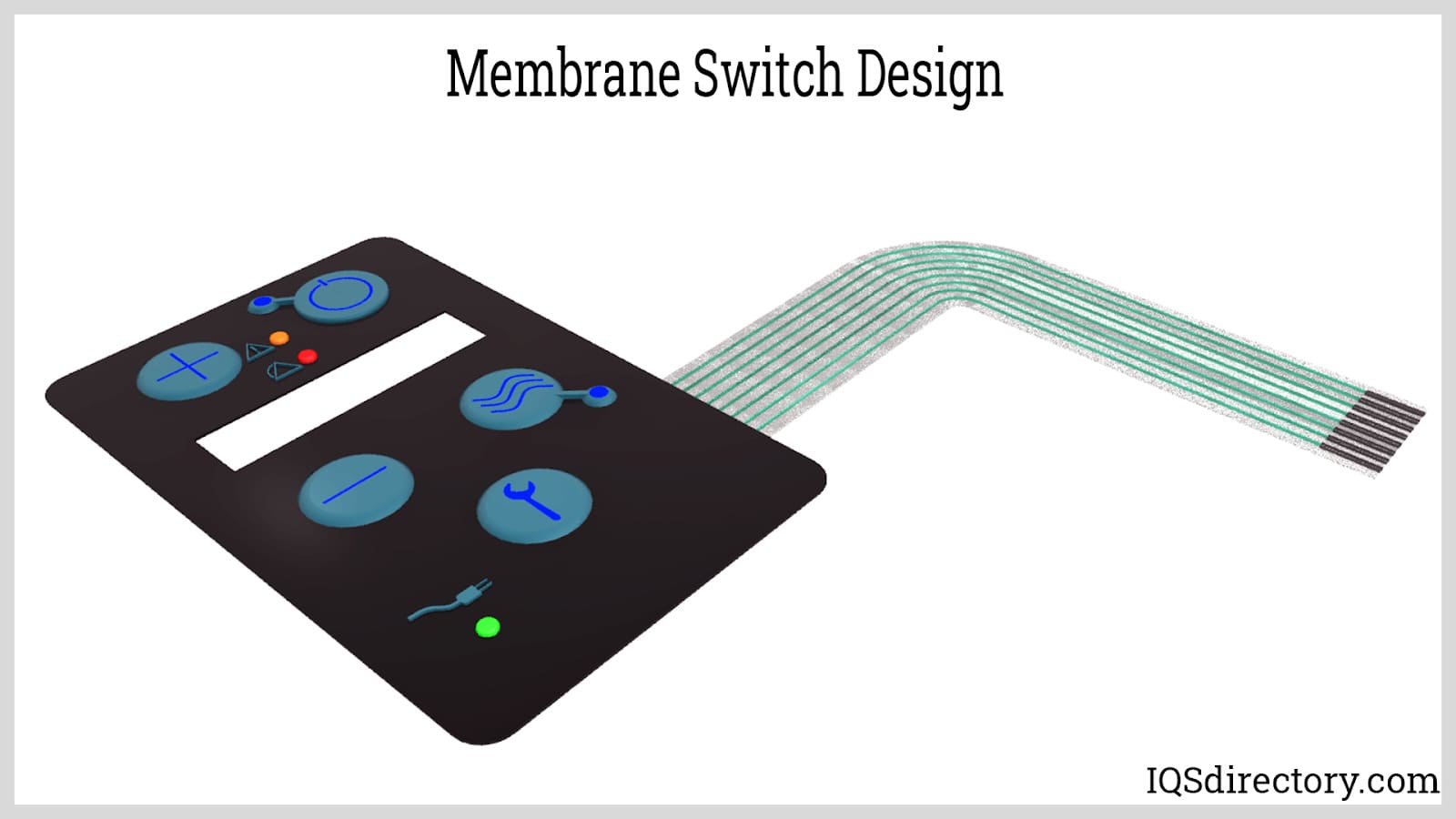 Membrane switches are interfaces made from multiple layers of plastic films or flexible materials to create user input devices.
Membrane switches are interfaces made from multiple layers of plastic films or flexible materials to create user input devices.
 These switches are built from several components layered and bonded using pressure-sensitive adhesives or heat-sealed films.
These switches are built from several components layered and bonded using pressure-sensitive adhesives or heat-sealed films.
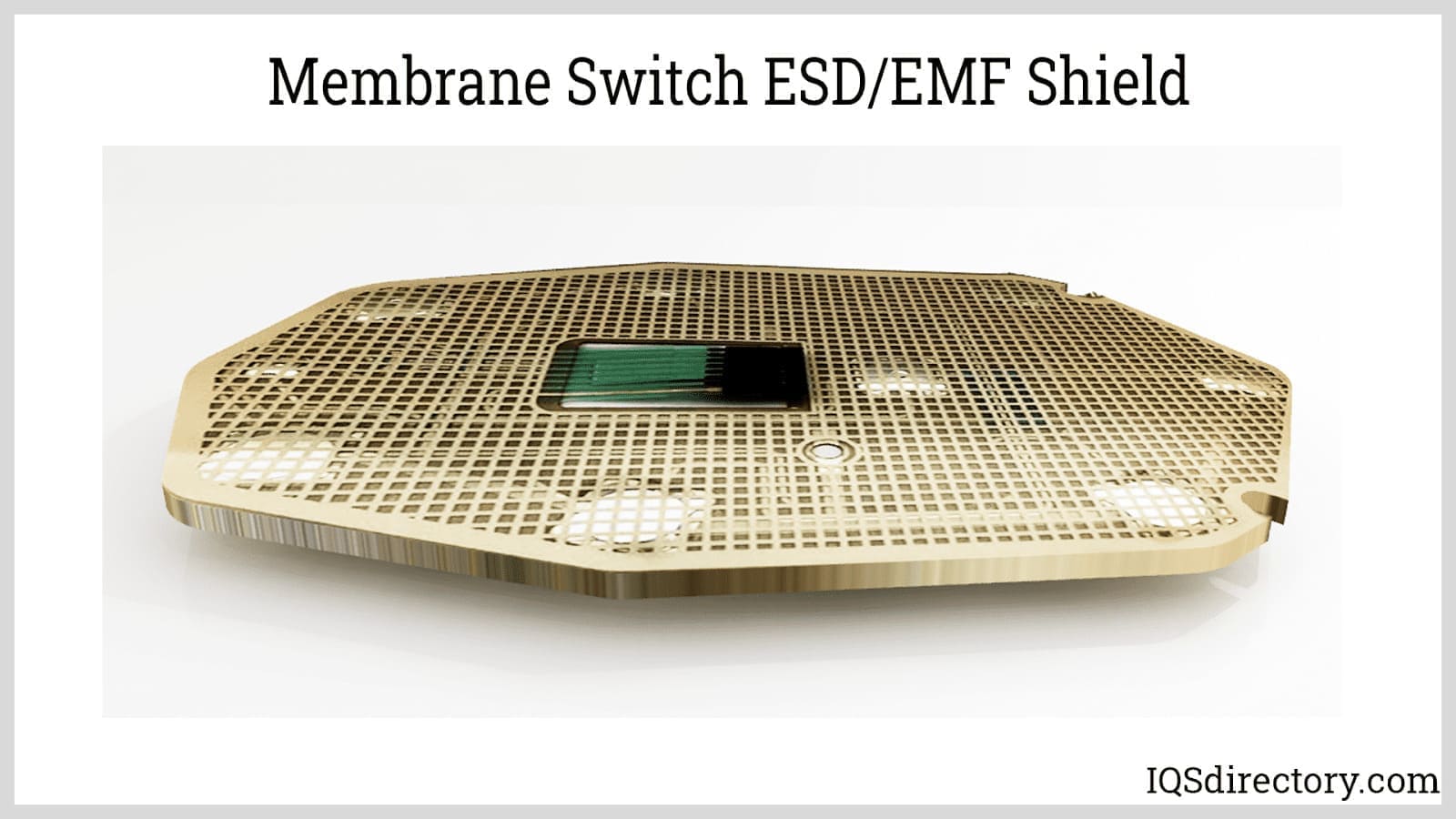 Membrane switches work at low voltages, but exposure to electrostatic discharge (ESD) or electromagnetic frequencies (EMF) can cause short circuits.
Membrane switches work at low voltages, but exposure to electrostatic discharge (ESD) or electromagnetic frequencies (EMF) can cause short circuits.
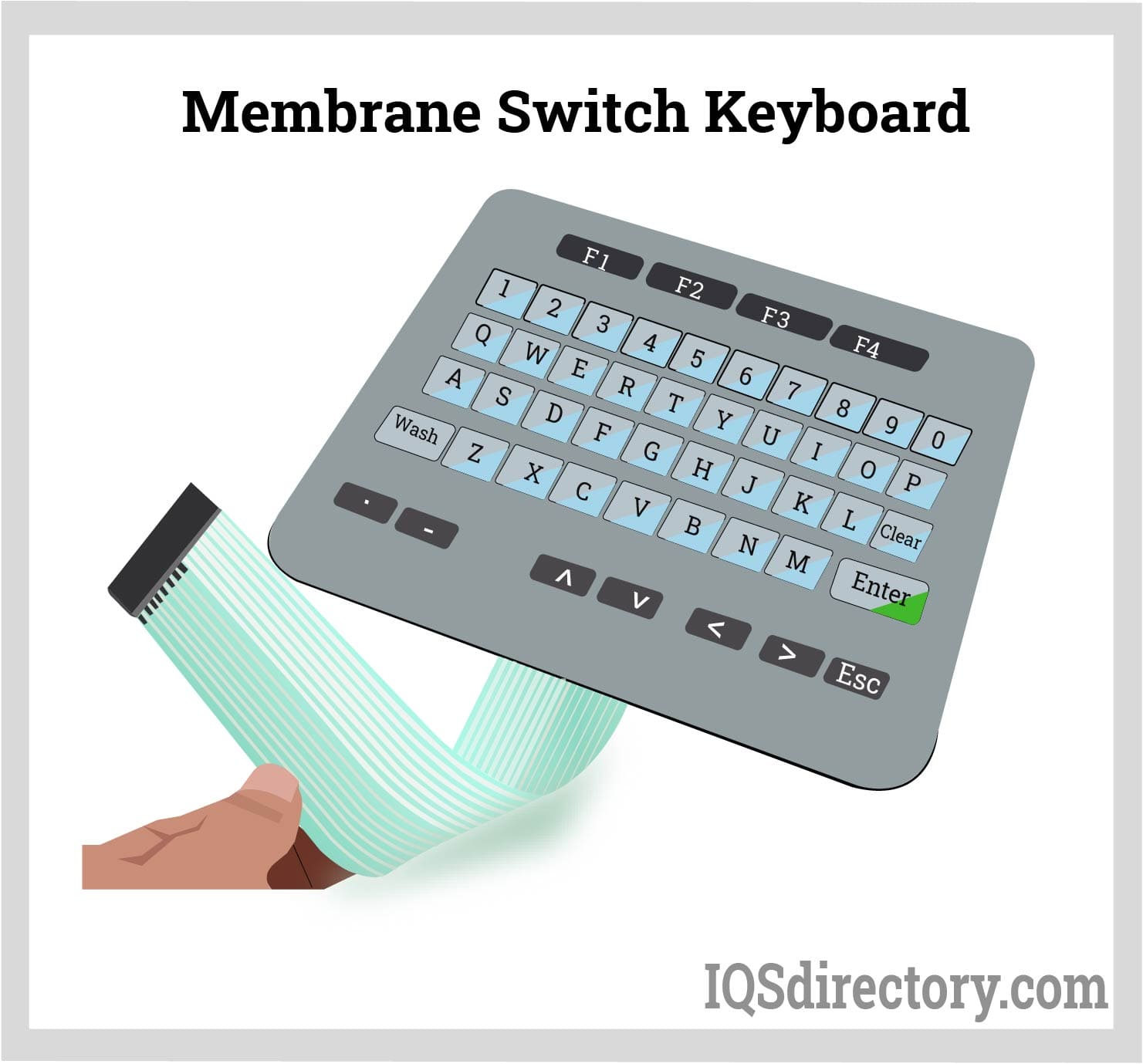 A membrane keyboard uses thin, flexible layers to form keys that activate electronic signals in devices and systems.
A membrane keyboard uses thin, flexible layers to form keys that activate electronic signals in devices and systems.
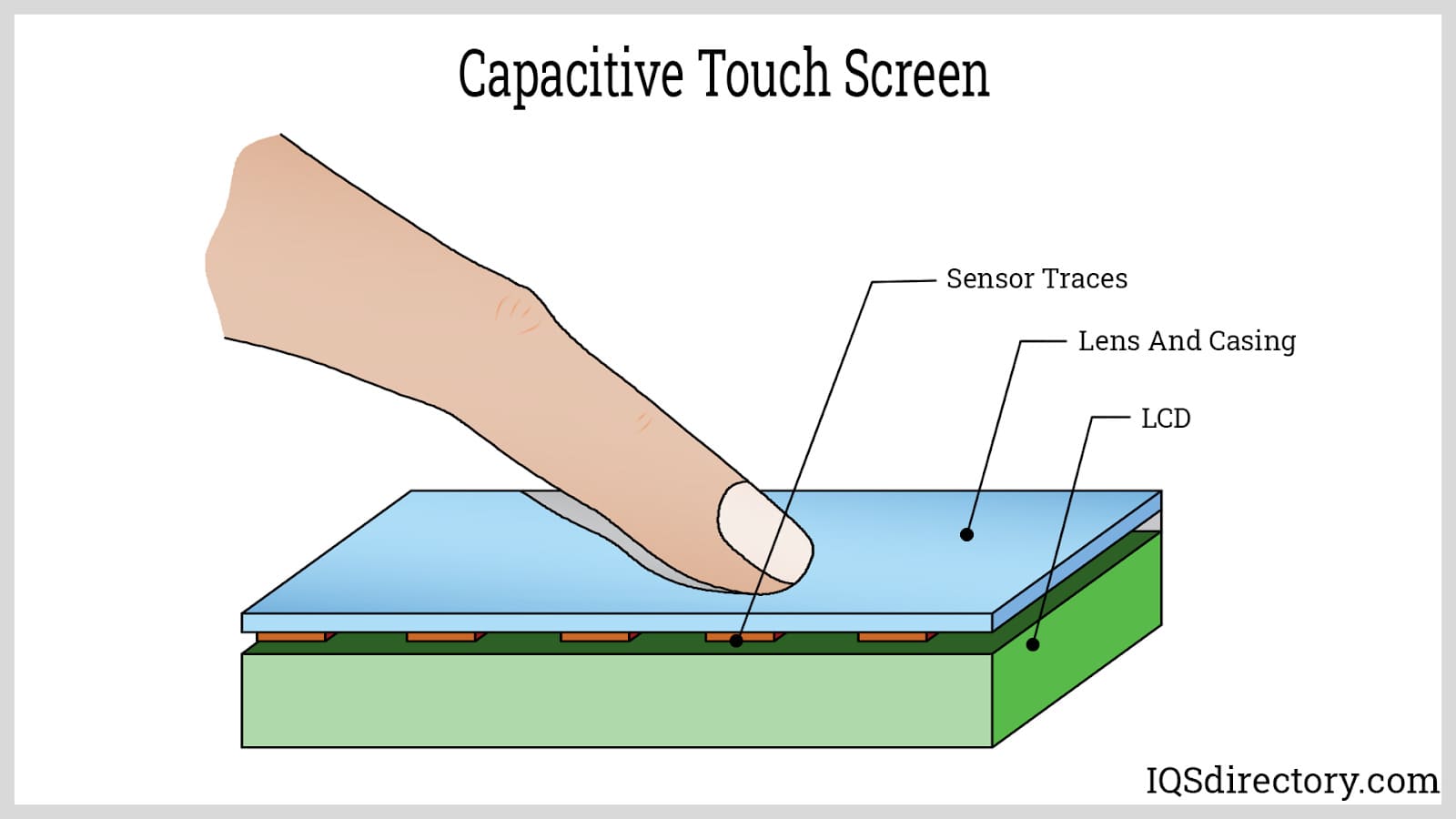 A display screen that enables user interaction through finger pressure.
A display screen that enables user interaction through finger pressure.
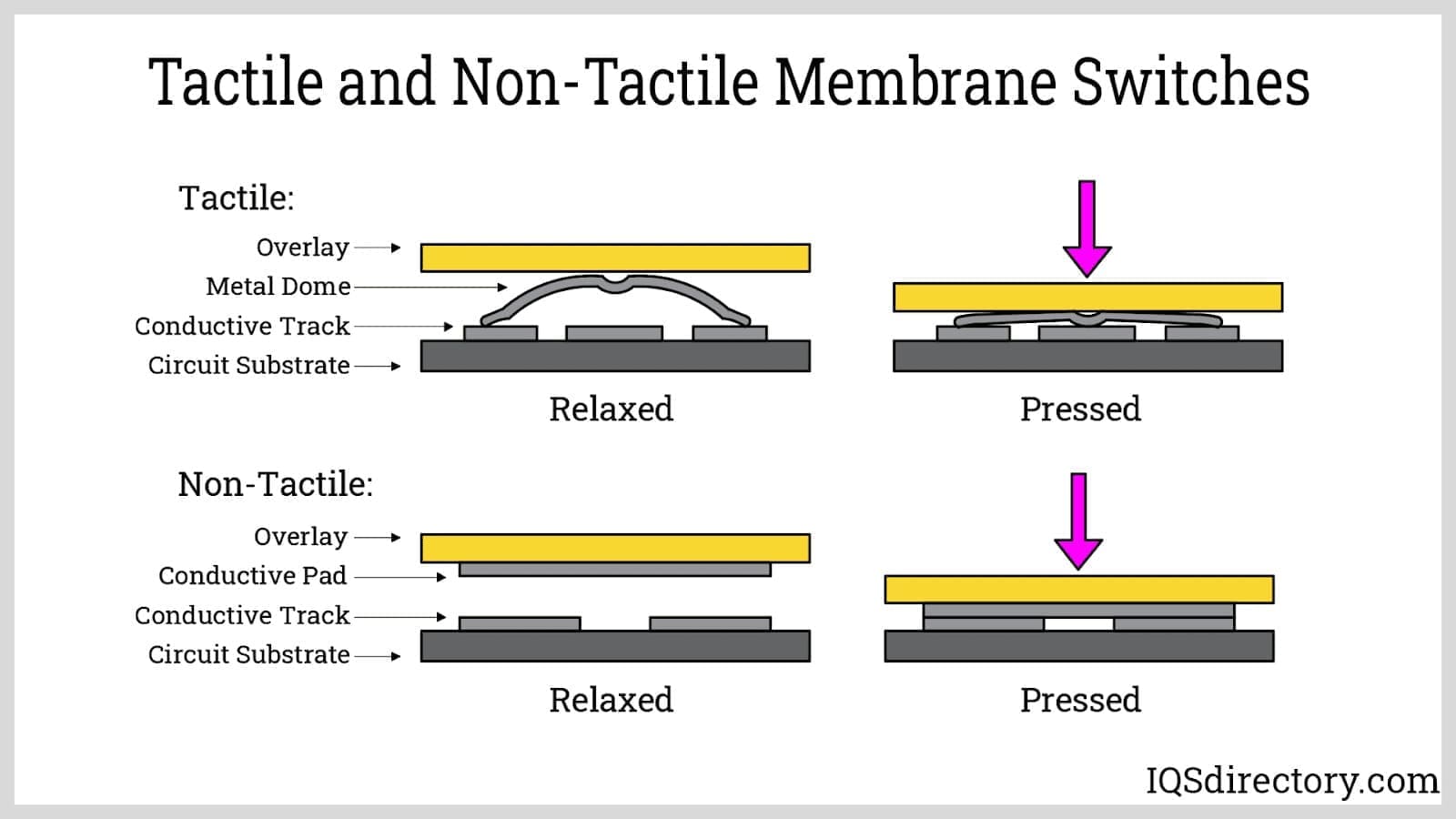 The distinction between tactile and non-tactile switches.
The distinction between tactile and non-tactile switches.
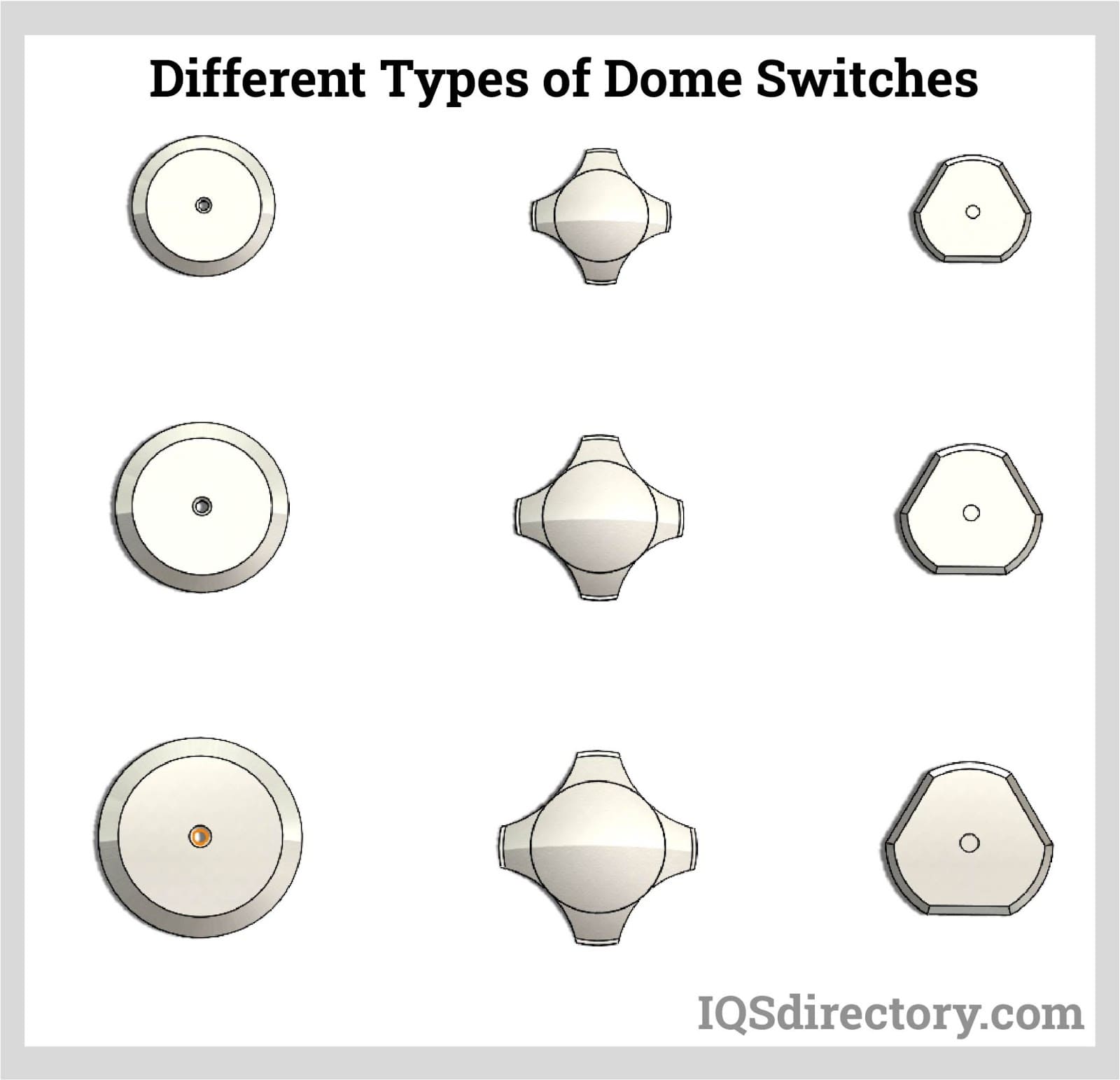 Dome switch membrane keyboards combine the features of membrane switch panels with mechanical keyboard switches.
Dome switch membrane keyboards combine the features of membrane switch panels with mechanical keyboard switches.
Membrane Switch Types
- Custom Keypads
- Custom membrane switches are user-interface solutions tailored for specialized electronic devices.
- Flexible Circuits
- Flexible circuits transmit electrical signals between control systems and processors, featuring a bendable design unlike rigid, brittle circuit boards.
- Graphic Overlays
- Panels that cover control interfaces, marking button locations and functions.
- HMI Systems
- Also called Human Machine Interfaces, these devices enable interaction between people and machines.
- Keyboard Switches
- Interfaces that allow users to send commands to electronic equipment.
- Membrane Keyboards
- Flat key surfaces with printed icons and outlines instead of moving keys.
- Membrane Keypads
- Flat keypads activated by finger pressure rather than traditional moving buttons.
- Membrane Switch Panels
- User interfaces featuring multiple control switches for transmitting user commands to electronic devices.
- Metal Domes
- Provide tactile feedback and complete the circuit. A dome switch offers a distinct feel when pressed. Metal domes are typically made from nickel, silver, or gold-plated stainless steel or aluminum, ensuring long-term reliability. Rubber domes are quieter and less expensive but have a lower tactile response and shorter lifespan than metal domes.
- Non-tactile Switches
- Membrane switches that do not feature a snap action when pressed.
- Polyester Dome Switches
- Manufactured by embossing domes into the polyester layer, resulting in a durable tactile element with more movement than metal domes and reducing the number of layers needed.
- Proximity Switches
- Switches that open or close a circuit when they contact or come near an object, detecting items in close proximity. The four main types include infrared, acoustic, capacitive, and inductive.
- Rubber Keypads
- User-interface solutions that transmit commands to electronic devices, identified by their rubber keys instead of plastic keys.
- Scissor Switch
- Utilizes a scissor-like mechanism between the circuit and dome, reducing dome travel distance and increasing keyboard durability.
- Tactile Switches
- Designed to provide a positive snap-action feedback. This can be achieved with polyester domes in the overlay or circuit layer or with stainless steel domes within the switch assembly.
- Touch Screens
- Input devices consisting of pressure-sensitive display screens for computers and other electronics.
Where Membrane Switches are Used
Membrane switches are utilized in laboratory instruments, aircraft dashboards, and consumer appliances such as coffeemakers, ovens, thermostats, TVs, audio/video systems, and lighting controls. Gaming devices of all types use membrane switches. Automated kiosks like vending machines, ATMs, and self-checkouts depend on this technology.
Industrial manufacturers use switch panels to manage equipment and entire operations efficiently. Touch controls support the operation of major infrastructure such as dams, power plants, communications networks, navigation, and all forms of transportation. Heavy machinery like cranes, mining equipment, and metal processing plants employ membrane switches for remote and safe control of hazardous tasks.
Throughout food production and distribution, membrane switches control equipment from farming to processing, transport, retail, and cooking. Systems such as farm machinery, bottling lines, conveyors, inventory tools, checkout stations, and ovens all operate via membrane switch keypads.
The Department of Defense and aerospace sectors use membrane switches extensively in devices from calculators to rockets. Military vehicles and aircraft rely on them as well. Medical devices must meet strict FDA guidelines, requiring manufacturers to use high-quality stainless steel domes for reliable function and tactile response. Some medical devices use color-coded leads to connect electrodes, with colored wires matching the control panel's graphic overlay.
Modern Advances in Membrane Switch Technology
Recent innovations in membrane switch technology include capacitive touch switches, which use separate conductive electrodes to create an electric field behind glass surfaces. Touching the glass alters the field voltage, triggering the activation of designated switches.
Capacitive touch screens provide a seamless electronic interface through a single, integrated surface. These screens serve as control centers for various switches within advanced electronics. Functions can be changed with touch commands, while the display remains static. Glass touch screens are easy to clean and resist dirt, chemicals, and acids. Capacitive switches have no moving parts, providing lasting durability.
Switch Manufacturers
Reliable manufacturers offer design teams specializing in custom membrane switches tailored to specific applications. They assess operational needs and create efficient switches with suitable graphic overlays for each use case.
Graphic overlays should display clear key patterns relevant to the equipment and be easy for operators to interpret. Membrane switches can be designed with a slim profile, micro-motion operation, rubber keypad overlays, flexible circuit layers, or integrated metal dome arrays.
Manufacturers and designers should guide you to equipment that delivers optimal performance, provide maintenance guidelines, and remain knowledgeable about industry standards to ensure compliance with material and design requirements.
Membrane Switch Terms
- Abrasion Resistance
- The capability of a membrane switch to resist surface wear and abrasion.
- Actuation
- The process of operating or engaging a switch mechanism.
- Actuation Force
- The amount of pressure needed to collapse the dome on a polyester, rubber, or metal keypad.
- Adhesion
- The molecular attraction that bonds one material to another, determined by the surface energy of each material.
- Backing/Rear Adhesive
- An adhesive layer applied to the back of a membrane switch for mounting purposes.
- Breakdown Voltage
- The lowest voltage at which insulation between conductors fails.
- Carbon Graphite Inks
- Inks made from carbon black suspensions, often used over silver circuits to reduce silver migration and lower costs when high conductivity is not essential.
- Conductivity
- A material’s property that enables the flow of electrons.
- Cross-Over
- A conductor intersection separated by a dielectric insulator.
- Dead Front
- A feature in graphic overlays where a button is only visible when illuminated from behind.
- Dielectric
- An insulating or non-conductive material used in circuits.
- Dielectric Inks
- Inks used to print protective barriers on conductive patterns, isolating selected regions and providing insulation for crossovers and tails in membrane switches.
- Dome Retainer
- An adhesive layer designed to hold metal domes in place within the key switch.
- El Lamp
- A thin device that lights large areas, commonly used for backlighting LCD membrane switches and control panels.
- Embedded LED
- The integration of surface-mount LEDs into a membrane switch assembly.
- Emboss
- A method of creating raised features on key surfaces through mechanical or thermal forming, which can also allow LED mounting inside the switch.
- Gloss Level
- The measured shine of a substrate, typically expressed as a percentage.
- Graphic Keypad
- Control keypads that use graphical icons to indicate button functions for navigating machines or processes, often including arrows or process symbols.
- Internally Vented
- Design in which switch openings are connected to protect against moisture and contaminants.
- Key Height
- The vertical distance from the top of a key to the keypad base.
- Light Emitting Diode (LED)
- LEDs are integrated in membrane switch layers to illuminate buttons.
- Moisture Resistance
- The ability of a material to prevent water absorption from the environment or direct contact.
- Overlay
- The outermost layer of a membrane switch or control panel.
- Over-Travel
- The additional movement of a rubber keyboard or metal dome after making circuit contact.
- Pillow Emboss
- Creating a raised surface on the graphic overlay above the keypad area of membrane switches.
- Pinout
- The diagram that shows the circuit output configuration for membrane switches.
- Pressure-Sensitive
- Adhesives that bond materials when pressure is applied, without heat or solvents.
- Rail Emboss
- Forms a raised ridge around the key area for tactile separation.
- Screen Printing
- A printing process using a mesh screen and stencil to selectively apply ink, commonly used in creating graphic overlays and membrane circuits.
- Silver Inks
- Resins with finely milled silver particles used to print conductive patterns on both flexible and rigid substrates, commonly for membrane switches.
- Spacer
- An adhesive layer in membrane switches that separates circuit layers, creating openings for keyswitches and allowing conductors to connect when pressed.